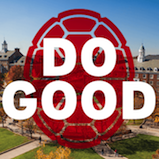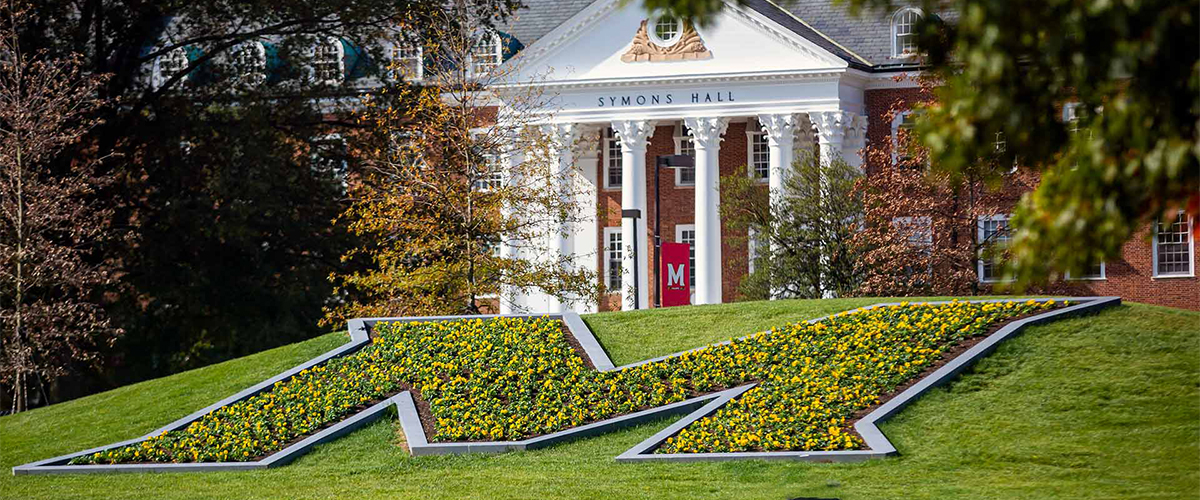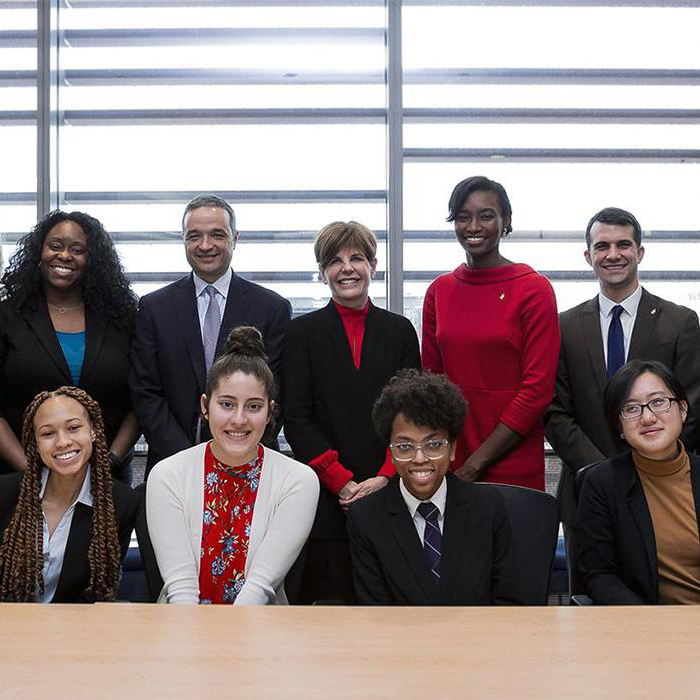- Home
- History and Mission
- Traditions
Traditions
Over a history spanning more than 150 years, the University of Maryland has become home to a variety of funny, odd, charming and unquestionably unique traditions. Here’s a sample, courtesy of University Archives.
Flag Unfurling
During football and basketball games, two giant pieces of the Maryland state flag are unfurled from the top of two student sections while a historical video set to the “2001: A Space Odyssey” theme song plays.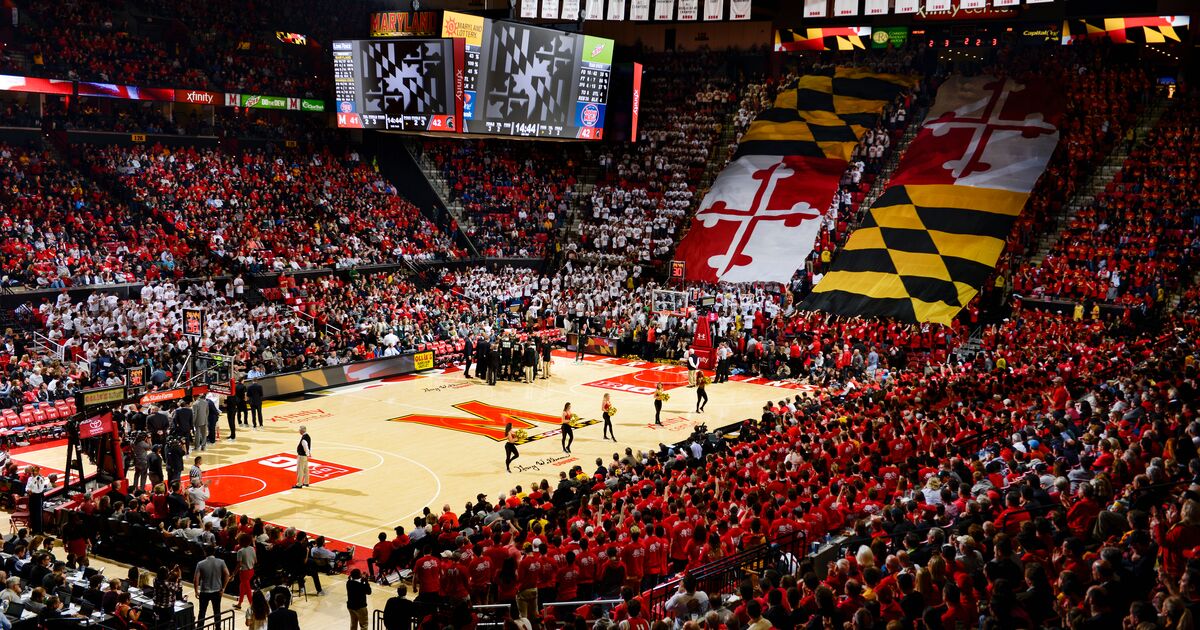
Flash Mob
Students break into a choreographed routine during a basketball game at Xfinity Center, in a tradition born in 2011. It has gained so much traction via social media that UMD has dubbed itself “Flash Mob U.”
Football Victory Song and Alma Mater
Following every home game, the Maryland football and the team make their way over to the student section and Maryland’s marching band, the Mighty Sound of Maryland, to sing the Maryland victory song and alma mater.
Midnight Mile
Charles “Lefty” Driesell, Maryland’s men’s basketball coach from 1969 to 1986, is generally credited with beginning the national college basketball tradition known as “Midnight Madness." In 1971, he invited the public to watch his players take laps around the track that used to encircle the field at then-Byrd Stadium at midnight on the first official day of team practice. Now called the Maryland Mile, the event takes place in October just a couple weeks before the start of the season. Each year, Maryland Basketball coaches and student-athletes are joined by 750-1,000 students at Kehoe Track & Field Complex/Ludwig Field to run a ceremonial mile around the track, signaling the "tipoff" of the new basketball season.
Newspaper Shaking
At home basketball games, students hold up, shake and pretend to read The Diamondback newspaper as the visiting team is introduced. Slightly related: Students hold their arms in the air and wiggle their fingers for good luck during Terp free throws.
Red and White Game
This annual intra-squad scrimmage held at the end of spring football practice dates to at least 1948. In 1951, the scrimmage became a contest between current Terps and recent alumni, but reverted to an intra-squad format in 1963, with the first usage of “red” and “white” to describe the teams appearing the next year. In more recent years, the Red and White Game has often been a featured event on Maryland Day.
Terp Alley
Join the Mighty Sound of Maryland, dance, cheer and Testudo as they wish the football team good luck as the student-athletes arrive on campus by visiting Terp Alley three hours before kickoff. Cheer them on along Fieldhouse Drive as they head to Jones-Hill House and enjoy music, inflatables, lawn games and more.
The Pride
The student group officially launched in fall 2014 includes several sport-specific organizations: The men’s soccer team’s loyal subset of student fans is known as the Crew. Volleyball’s steadfast student fans are the Mob. Men’s lacrosse has the Pit, wrestling has the Matpack, baseball’s fans are dubbed the Backstop, and women’s soccer’s backers are the Force.
Byrd Beach
For decades, until everyday access to the football stadium was cut off, students greeted the return of springtime warmth to the campus by donning their bathing suits and stretching out along the bleachers in then-Byrd Stadium to study, tan and people-watch.
Jim Henson and Kermit Statue
A popular place to snap photos is this bronze statue in a memorial garden outside Stamp Student Union capturing a whimsical conversation between pioneering puppeteer Jim Henson ’60 and his most famous character, Kermit the Frog. Henson was known around the world for his creation of the Muppets and his television work on “Sesame Street” and “The Muppet Show.” The statue by sculptor Jay Hall Carpenter was installed in 2003 with funds from the UMD classes of 1994, 1998 and 1999.
M Circle
The iconic floral M originally located in the traffic circle at the intersection of Campus and Regents drives was created in 1976 to commemorate the nation’s bicentennial, and has since become the premier spot for graduation photos. The M shifted across the street to a new home in front of the Mitchell Building in 2020 to make way for the light-rail Purple Line. The M is replanted twice a year, with pansies in the fall and begonias in the summer.
McKeldin Mall
The 16.28-acre area from Main Administration Building to McKeldin Library is one of the largest academic malls in the country and a popular hangout for students on sunny days. Its configuration of sidewalks is based on the paths students cut through the grass as they walked to the buildings lining the mall. The 250-foot-long fountain on the eastern end of the mall honors members of the campus chapter of the Omicron Delta Kappa honor society. It is engraved with quotes from Franklin Delano Roosevelt and Martin Luther King Jr., along with a list of ODK fraternity members from the university.
The Sundial, located in the center of McKeldin Mall, was a gift from the Class of 1965, the Department of Physics and Astronomy, and friends of Professor Uco Van Wijk, who died in 1966. It was renovated with donations from the Class of 1990.
Point of Failure
A brick and concrete circle nearly 40 feet across in the pavement between Shoemaker and LeFrak halls designates the center of campus activity at the time of the Great Fire of 1912. It leveled the two largest campus buildings, as explained in historical plaques placed near the site on the fire’s 75th anniversary. With lines radiating in the direction of each of the buildings that existed at the time of the fire, the circle looks like a carelessly sliced pie. It’s probably not campus history that keeps the circle in the minds of current students, however. Legend has it students who step on the center of the circle where the lines intersect won’t graduate in four years.
School Colors
The four colors of the University of Maryland—red, white, black and gold—echo the striking Maryland state flag, which is based on the shield in the coat of arms of George Calvert, first Lord Baltimore and original colonial proprietor of what became Maryland. UMD’s colors weren’t always standardized. Early athletic uniforms were gray or maroon and gray, and graduating classes often selected their own colors. Uniforms transitioned to black and gold in the early 1920s and remained that way until the 1942 season, when new football Coach Clark Shaughnessy switched the uniforms to red and white. He left after one year, and red and white returned—until Shaughnessy was rehired for one more year, in 1946. Black and gold remained as football uniform accents, while men’s basketball kept the colors until the 1980s. Today all four colors are featured in Terps’ athletic uniforms.
Testudo
The bronze likeness of a diamondback turtle overlooking the mall in front of McKeldin Library has a well-burnished nose for a reason—rubbing it for good luck is our campus’s most well-known tradition. The statue was dedicated in 1933, but it was only decades later that this custom began. In the early 1990s, Maryland students augmented the custom to begin making offerings to Testudo at finals time—food, drinks, heartfelt poems and even pieces of furniture in hopes of a good grade. In addition to the primary Testudo statue at the heart of campus, five other bronze replicas can be found around campus at the Stamp Student Union, Xfinity Center, the Samuel Riggs IV Alumni Center and two at Maryland Stadium.
Art Attack
The annual spring event features a day of student activities on McKeldin Mall and in the Stamp, vendors selling a wide range of goods, and a concert at Byrd Stadium featuring big-name musical entertainers.
First Look Fair
Each fall, new students and others learn how to get involved on campus and connect with other students with similar interests at this event dating back to 1983. The outdoor event on McKeldin Mall hosts more than 500 students clubs and organizations, campus departments and services, local vendors and community service agencies.
Homecoming
Each fall, the university welcomes back alumni to join current students for a week of reconnecting through events including the annual comedy show, carnival on McKeldin Mall, and of course, the football game.
Maryland Day
The University of Maryland opens its doors every year on the last Saturday in April to alumni and their families, parents, prospective students, the business community and residents of the surrounding Baltimore-Washington metro area. The campus welcomes up to 100,000 visitors for a day of learning, exploration and fun for the entire community.
Chapel Chimes
For years, the Memorial Chapel carillon has chimed “Hail! Alma Mater” on the hour during regular waking hours. Much to the dismay of students who periodically come into the Chapel office to ask to manually ring the bells manually, the system is programmed on a computer and runs electronically. Every Maryland Day since its 1999 launch, the carillon plays a series of popular and classical selections on the hour, providing a melodic background for the day's festivities. Since UMD joined the Big Ten Conference, the “Maryland Fight Song” plays on the days of football and basketball games. 
Weddings
The Memorial Chapel is a favorite place for Terps to tie the knot. Historically, the reservations office opened on the first of the month, and couples had to wait in line, sometimes overnight, to get a preferred date the following year. Many made it a romantic occasion with picnic baskets and lawn chairs. Today, couples can book year-round. Of the approximately 65 weddings each year, two-thirds involve an alumni, veteran or military connection.
Labyrinth and Journal
Since the addition of the Garden of Reflection and Remembrance on the Chapel grounds in 2010, students of all faiths and tradition can walk the meditative labyrinth. Also tucked away in the Garden are journals where students, alumni, faculty, staff and the public freely offer moving comments on their personal lives, campus events and the world in general.
Alma Mater
Hail, Alma Mater!
Hail to thee Maryland!
Steadfast in loyalty,
For thee we stand.
Love for the black and gold,
Deep in our hearts we hold.
Singing thy praise forever,
Throughout the land.
Maryland Victory Song
Maryland we're all behind you,
Raise high the black and gold.
For there is nothing half so glorious,
As to see our team victorious.
We've got the team Terps,
We've got the steam Terps,
So keep on fighting, don't give in!
M-A-R-Y-L-A-N-D (yell)
Maryland will win!
Words and music by Thornton W. Allen
copyright 1928 by the Student Assembly of Maryland
Fight Song
Fight, fight, fight for Maryland,
Honor now her name again,
Push up the score, keep on fighting for more,
For Maryland, GO TERPS!
And we will fight, fight, fight for terrapins,
Keep on fighting 'till we win.
So sing out our song as we go marching along,
To victory!!!
Words and music by Ralph Davis ’42
Copyright 1941 by the University of Maryland Student Government Association
Beanies
From the 1910s to the 1960s, freshman students were required to wear beanies everywhere they went on campus, from their first day of school until the freshmen-sophomore tug-of-war, held during the spring semester. The beanies were known as “rat caps” for the men, and “rabbit caps” for the women.
Class Wars
What happened when the beanie-wearing freshmen squared off against their arch-nemesis, the sophomore class? In the early part of the 20th century, the competition involved first- and second-year students playing King of the Mountain on a 120-foot iron water tower located on campus. This tradition continued until 1913 when wily sophomore Robert McCutcheon knocked down the freshman flag with a well-aimed rifle shot that severed its staff.
Painting class years on the tower became the preferred method of braggadocio in the early 20th century, until 1937, when the unused water tower was sold for $800 by the university to supply the war effort in Europe.
This annual struggle between the freshman and sophomore classes during the spring semester marked the end of the beanie-wearing season for the freshman. The traditional contest over Paint Branch Creek began about 1915 and continued into the early 1950s.
Kissing Tunnel
Located beneath Regents Drive south of Memorial Chapel, the historic Kissing Tunnel got its name by being a popular stop after a College Park date night back in the 1950s and 1960s, when residence halls were single sex.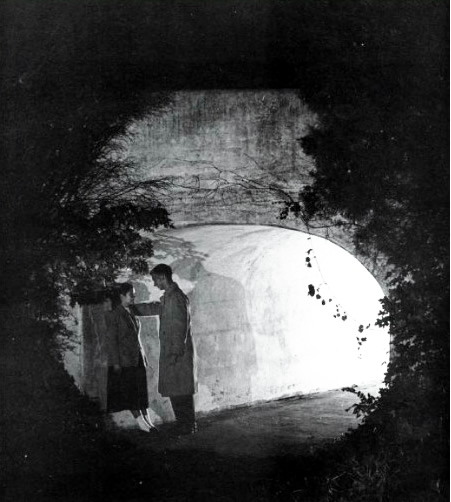
May Day
Adele H. Stamp, the university’s dean of women from 1922¬ to 1960, began the tradition of celebrating May Day at Maryland. The ceremony, last held in 1961, featured a Maypole dance, pageant, Mortar Board tapping for senior women and crowning of the queen.
